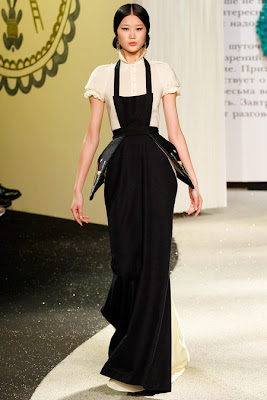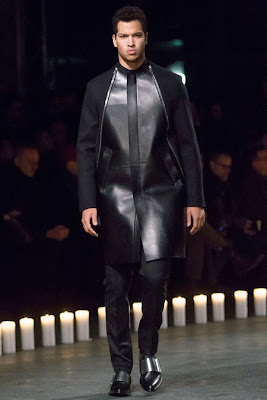Of those that I've seen, many of this year's Oscar-nominated movies have left me unaffected. Les Miserables was never going to be my cup of tea/ vat of misery, Django Unchained paled in comparison to Tarantino's finest, and, well, I just couldn't figure out what raised Silver Linings Playbook above enjoyable. So in between catching the rest of this year's nominations, I'm looking forward to the coming months and a fresh batch of movies.
April brings us The Place Beyond the Pines, a crime drama from the director the 2010's heartbreaking Blue Valentine. Derek Cianfrance once again puts Ryan Gosling in the lead role, this time playing a motorcycle stunt rider who goes to drastic lengths to provide for his lover (Eva Mendes) and their young son. He soon has to deal with an ambitious cop in the form of Bradley Cooper, but he is up against a corrupt detective, played by Ray Liotta who seems to be making a comeback with roles in some quality movies this year. Dane DeHaan proved his worth playing cripple Cricket in last year's Lawless, and this movie gives him another chance to stand strong in an accomplished cast. The crew, too, is something special, including cinematographer Sean Bobbitt who has gained recognition for his work on Shame and Hunger. Erin Benach, who provided the now iconic scorpion jacket in Drive, is Costume Designer, having worked with Gosling and Cianfrance on Blue Valentine. It may be surprising for them to follow up the heartbreak and tenderness of that movie with a crime flick, but this team is suited to offer a unique view on a life of crime, with an excellent portrayal of desperation in the face of ill-destined fate.
Another upcoming crime drama with a twist is The Iceman, the true story of contract killer Richard Kuklinski, whose wife and children had no clue about his real job until his arrest in 1986. Relative newcomer Ariel Vromen goes behind the camera, and having only directed short films and smaller productions previously, this is his biggest production so far. Michael Shannon who plays Kuklinski, is somewhat unproven so far too, his greatest part to date being his Oscar-nominated supporting role in Revolutionary Road. Here he plays an efficient killer of 100 victims, with a lack of emotion that impresses boss Ray Liotta, but when his heart gets in the way, things start to go awry. The cast is an odd mix of established serious talents like Liotta, James Franco and Winona Ryder, alongside recognisable yet surprising faces like David Schwimmer of Friends and Chris Evans of Fantastic Four. With a complex storyline of a killer leading a double life, it might just give the cast and crew a chance to prove themselves.
Perhaps the crime drama in the most unusual guise of the three is Robot & Frank, the story of how an ex-jewel thief is given a robot butler by his son, only to warm to his new companion when he realises he could help him restart his heist career. Despite how ridiculous the plot sounds, the film won the Alfred P Sloan Award at the Sundance Film Festival, which honours a feature piece which deals with matters of science or technology. The movie was also nominated for Best First Screenplay at the Independent Spirit Awards for the efforts of writer Christopher D. Ford. The cast is more experienced than the crew and is led by Frank Langella, who is best known for his Oscar-nominated performance in Frost/Nixon. The popular Susan Sarandon plays the love interest, while Liv Tyler is another familiar face. An interesting touch to this kooky comedy set in the future is an original soundtrack by Francis and the Lights, aka musician Francis Farewell Starlite, whose fans include Drake and Kanye West, and have supported MGMT on tour.
And from the future to important moments in history, 42 takes us back to 1947, when Jackie Robinson became the first black Major League Baseball player when he signed with the Brooklyn Dodgers. Having mostly held small parts in television productions, this movie also marks a milestone for lead Chadwick Boseman, the role having being intended for Denzel Washington when Spike Lee tried to develop Robinson's bio pic in 1995. Harrison Ford plays baseball exec Branch Rickey who supported Robinson's career, alongside controversial manager Leo Durocher (played by Christopher Meloni), who coined the phrase 'Nice guys finish last'. Brian Helgeland, who wrote LA Confidential and Mystic River, paints an ugly picture of relentless racism with high of moral and real victories, but his limited experience as a director (A Knight's Tale) causes some concern.
One director that could not invite any doubts is Terrence Malick, following up 2011's Oscar-nominated Tree of Life with To the Wonder. It won the SIGNIS Award at the Venice Film Festival, last year won by Kathryn Bigelow's Hurt Locker. The cast of Ben Affleck, Javier Bardem and Rachel McAdams need no introduction, with ex-Bond girl Olga Kurylenko in her first challenging role since stepping into the spotlight. She plays Affleck's lover, their romance challenged upon their return to Oklahoma where she meets fellow exile and priest, Father Quintana (Bardem) who is questioning his faith. Meanwhile, Affleck is torn between the woman who moved to America to be with him, and the feelings he has for old flame Jane (McAdams). The trailer offers a glimpse of the dreamy style Malick is known for, portraying love as fleeting and fragile as it is intense and strong. If this taster is anything to judge by, this is all intensified by the director's renewed collaboration with composer Hanan Townshend, who worked on the soundtrack of The Tree of Life. With word that supporting roles from Rachel Weisz, Jessica Chastain and Michael Sheen were cut, the standard for this production seems high, as does the fact that it marks the shortest time Malick has gone between work, being known for the 20 year gap he left between Days of Heaven and The Thin Red Line, meaning To the Wonder must be something he feels passionately about.
Another upcoming crime drama with a twist is The Iceman, the true story of contract killer Richard Kuklinski, whose wife and children had no clue about his real job until his arrest in 1986. Relative newcomer Ariel Vromen goes behind the camera, and having only directed short films and smaller productions previously, this is his biggest production so far. Michael Shannon who plays Kuklinski, is somewhat unproven so far too, his greatest part to date being his Oscar-nominated supporting role in Revolutionary Road. Here he plays an efficient killer of 100 victims, with a lack of emotion that impresses boss Ray Liotta, but when his heart gets in the way, things start to go awry. The cast is an odd mix of established serious talents like Liotta, James Franco and Winona Ryder, alongside recognisable yet surprising faces like David Schwimmer of Friends and Chris Evans of Fantastic Four. With a complex storyline of a killer leading a double life, it might just give the cast and crew a chance to prove themselves.
Perhaps the crime drama in the most unusual guise of the three is Robot & Frank, the story of how an ex-jewel thief is given a robot butler by his son, only to warm to his new companion when he realises he could help him restart his heist career. Despite how ridiculous the plot sounds, the film won the Alfred P Sloan Award at the Sundance Film Festival, which honours a feature piece which deals with matters of science or technology. The movie was also nominated for Best First Screenplay at the Independent Spirit Awards for the efforts of writer Christopher D. Ford. The cast is more experienced than the crew and is led by Frank Langella, who is best known for his Oscar-nominated performance in Frost/Nixon. The popular Susan Sarandon plays the love interest, while Liv Tyler is another familiar face. An interesting touch to this kooky comedy set in the future is an original soundtrack by Francis and the Lights, aka musician Francis Farewell Starlite, whose fans include Drake and Kanye West, and have supported MGMT on tour.
And from the future to important moments in history, 42 takes us back to 1947, when Jackie Robinson became the first black Major League Baseball player when he signed with the Brooklyn Dodgers. Having mostly held small parts in television productions, this movie also marks a milestone for lead Chadwick Boseman, the role having being intended for Denzel Washington when Spike Lee tried to develop Robinson's bio pic in 1995. Harrison Ford plays baseball exec Branch Rickey who supported Robinson's career, alongside controversial manager Leo Durocher (played by Christopher Meloni), who coined the phrase 'Nice guys finish last'. Brian Helgeland, who wrote LA Confidential and Mystic River, paints an ugly picture of relentless racism with high of moral and real victories, but his limited experience as a director (A Knight's Tale) causes some concern.
One director that could not invite any doubts is Terrence Malick, following up 2011's Oscar-nominated Tree of Life with To the Wonder. It won the SIGNIS Award at the Venice Film Festival, last year won by Kathryn Bigelow's Hurt Locker. The cast of Ben Affleck, Javier Bardem and Rachel McAdams need no introduction, with ex-Bond girl Olga Kurylenko in her first challenging role since stepping into the spotlight. She plays Affleck's lover, their romance challenged upon their return to Oklahoma where she meets fellow exile and priest, Father Quintana (Bardem) who is questioning his faith. Meanwhile, Affleck is torn between the woman who moved to America to be with him, and the feelings he has for old flame Jane (McAdams). The trailer offers a glimpse of the dreamy style Malick is known for, portraying love as fleeting and fragile as it is intense and strong. If this taster is anything to judge by, this is all intensified by the director's renewed collaboration with composer Hanan Townshend, who worked on the soundtrack of The Tree of Life. With word that supporting roles from Rachel Weisz, Jessica Chastain and Michael Sheen were cut, the standard for this production seems high, as does the fact that it marks the shortest time Malick has gone between work, being known for the 20 year gap he left between Days of Heaven and The Thin Red Line, meaning To the Wonder must be something he feels passionately about.




































































